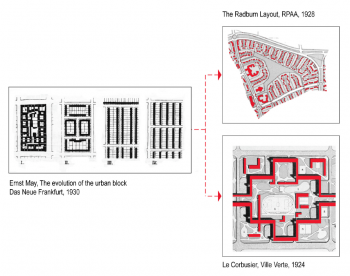Ref: Porta, S. Da Fontoura Costa, L. Morello, E. Viana, M., Strano, E. Venerandi, A. Romice, O. (2011), Plot-Based-Urbanism and Urban Morphometrics: Measuring the Evolution of Blocks, Street Fronts and Plots in Cities, Working Papers of the Urban Design Studies Unit at University of Strathclyde, Glasgow, UK.
Generative urban design has been always conceived as a creation-centered process, i.e. a process mainly concerned with the creation phase of a spatial transformation. We argue that, though the way we create a space is important, how that space evolves in time is ways more important when it comes to providing livable places gifted by identity and sense of attachment. We are presenting in this paper this idea and its major consequences for urban design under the title of “Plot-Based Urbanism”. We will argue that however, in order for a place to be adaptable in time, the right structure must be provided “by design” from the outset. We conceive urban design as the activity aimed at designing that structure. The force that shapes (has always shaped) the adaptability in time of livable urban places is the restless activity of ordinary people doing their own ordinary business, a kind of participation to the common good, which has hardly been acknowledged as such, that we term “informal participation”. Investigating what spatial components belong to the spatial structure and how they relate to each other is of crucial importance for urban design and that is the scope of our research. In this paper a methodology to represent and measure form-related properties of streets, blocks, plots and buildings in cities is presented. Several dozens of urban blocks of different historic formation in Milan (IT) and Glasgow (UK) are surveyed and analyzed. Effort is posed to identify those spatial properties that are shared by clusters of cases in history and therefore constitute the set of spatial relationships that determine the morphological identity of places. To do so, we investigate the analogy that links the evolution of urban form as a cultural construct to that of living organisms, outlining a conceptual framework of reference for the further investigation of “the DNA of places”. In this sense, we identify in the year 1950 the nominal watershed that marks the first “speciation” in urban history and we find that factors of location/centrality, scale and street permeability are the main drivers of that transition towards the entirely new urban forms of contemporary cities.


